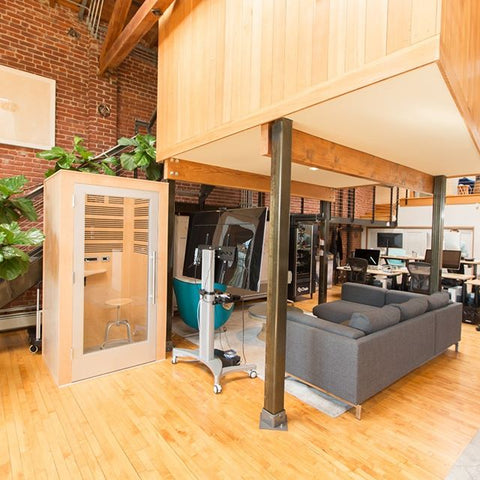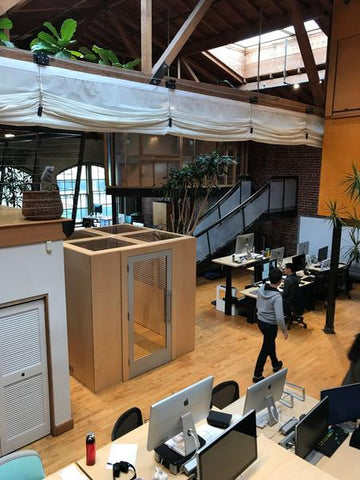Agile office design is a concept that focuses on creating flexible and adaptable work environments to enhance collaboration, productivity, and employee well-being. By incorporating principles of agility and flexibility into office layouts, companies can create spaces that can easily evolve and meet the changing needs of their workforce.

Understanding Agile Office Design
Agile office design is rooted in the philosophy of maximizing flexibility and adaptability in the workplace. This approach prioritizes creating a variety of spaces that cater to different work modes and preferences, enabling employees to select environments that align with their tasks and work styles at any given moment. The foundation of agile office design lies in understanding that work is no longer a one-size-fits-all activity; rather, it encompasses a range of tasks that require different settings for optimal productivity and creativity.
At its core, agile office design focuses on eliminating the traditional barriers of static office layouts. Instead, it introduces dynamic, multi-use areas that can transform based on the needs of the workforce. These might include open-plan areas for collaboration, quiet zones for concentration, and lounge areas for informal meetings or relaxation. The flexibility offered by agile design encourages spontaneous interactions and idea-sharing, fostering a culture of innovation and teamwork.
Key elements of agile office design include modular furniture, movable partitions, and technology-enabled workspaces. Modular furniture allows for quick reconfiguration of spaces to accommodate different group sizes or work styles. Movable partitions can create temporary private areas for focused work or open spaces for collaborative efforts. Technology integration ensures that employees can work effectively from any location within the office, supporting both mobility and connectivity.
Furthermore, agile design emphasizes the importance of employee choice and autonomy. By providing a range of work environments, employees can control their work experience, choosing settings that best meet their needs at any given time. This empowerment is crucial for employee satisfaction, well-being, and productivity.
Agile office design is not just about physical space; it's a strategic approach that reflects the evolving nature of work in the 21st century. By embracing agility, organizations can create work environments that are not only more responsive to the changing needs of their employees but also conducive to higher levels of innovation and performance.
The Impact of Agile Office Design: What the Stats Say
The adoption of agile office design is increasingly recognized for its profound impact on the workplace, with compelling statistics underscoring its benefits. A 2022 report by Gartner highlighted a notable uptick in employee performance, with organizations that fully embrace agile workspaces reporting a 34% improvement in productivity. This surge in productivity is attributed to the flexible and adaptable nature of agile environments, which support a variety of workstyles and tasks. Additionally, the same study found a 30% increase in employee engagement, further validating the positive influence of agile office layouts on the workforce.
Delving deeper into the statistics, research conducted by Steelcase in 2021 revealed a 40% decrease in the time spent searching for meeting spaces in offices with agile designs, thanks to the availability of a diverse range of work settings tailored to different activities. Moreover, these adaptive spaces have been linked to a 28% reduction in workplace stress, as employees feel more empowered and supported in their work environment.
The connection between agile office design and talent retention cannot be overlooked. A study by Leesman in 2022 found that companies employing agile workspace principles experienced a 22% lower employee turnover rate. This is a direct result of providing a work environment that prioritizes flexibility, choice, and comfort, making employees feel more valued and less inclined to seek opportunities elsewhere.
Furthermore, the financial implications of switching to agile designs are significant. According to a CBRE report in 2023, companies that have transitioned to agile office layouts have seen a reduction in real estate costs by up to 30%, driven by more efficient use of space and the elimination of underutilized areas.
These statistics clearly demonstrate the tangible benefits of agile office design, from enhancing employee productivity and engagement to reducing operational costs. As more organizations recognize and adopt these principles, the impact of agile design on the modern workplace continues to grow, shaping a future where flexibility and adaptability are at the forefront.
Some Benefits of Agile Office Design
Agile office design has the transformative power to revolutionize the workplace by fostering an environment that is conducive to collaboration, creativity, and overall employee well-being. By eliminating the rigid constraints of traditional office layouts, agile design allows for a fluid and dynamic workspace that can adapt to the ever-changing needs of its users.
One of the most significant advantages of this approach is the promotion of collaboration among team members. Agile workspaces are crafted with communal areas that encourage spontaneous meetings and idea exchange, thereby enhancing teamwork and innovation. These spaces often feature adaptable furniture and technology, enabling teams to collaborate more efficiently and effectively than in a conventional office setting.
Another crucial benefit is the increase in employee satisfaction and well-being. With the freedom to choose from various work settings, employees can select environments that best match their tasks and personal preferences at any given moment. This autonomy not only boosts morale but also leads to a more engaged and productive workforce. The inclusion of diverse workspaces, such as quiet zones for focused work and social areas for relaxation, ensures that individuals can find balance throughout their day, contributing to improved mental health and job satisfaction.
Agile office design also offers unmatched flexibility, allowing companies to swiftly respond to business changes without the need for extensive renovations. This adaptability is essential in today’s fast-paced world, where the ability to pivot and evolve can be the difference between success and stagnation.
Overall, the agile office layout stands as a beacon of innovation in workplace design, championing benefits that extend beyond mere aesthetics to fundamentally improve how work is conducted, how teams interact, and how employees feel about their workplace.

Innovative Ideas for Agile Office Design
To ignite creativity and foster an adaptive work environment, implementing dynamic zones dedicated to collaboration is essential. Think of spaces equipped with modular seating arrangements and portable whiteboards, designed to spur impromptu brainstorming and strategy sessions. These zones are not just about functionality but also about creating an atmosphere that encourages open communication and the free flow of ideas.
Another cornerstone of agile office design is the use of flexible furniture solutions. Opt for pieces that can be easily repositioned or reconfigured, such as desks on wheels or foldable tables, to support an array of work activities ranging from individual tasks to group projects. This flexibility not only caters to the immediate needs of employees but also allows the workspace to evolve alongside the organization.
Integrating technology seamlessly into the workplace is also paramount. Smart, connected workspaces that support wireless charging, have built-in screens for digital collaboration, and offer high-speed internet access in every corner ensure that employees can work efficiently wherever they choose to settle down for the day.
Additionally, incorporating biophilic elements into office design can have profound effects on employee well-being and creativity. This can involve anything from indoor plants and living walls to natural lighting and outdoor workspaces, creating an environment that reduces stress and enhances cognitive function.
Lastly, carving out spaces for relaxation and informal gatherings is crucial. These areas, equipped with comfortable seating and amenities like coffee stations, can act as social hubs that promote a sense of community and well-being within the workplace. They serve not only as a place for employees to recharge but also as an informal setting for creative collaboration and relationship building.
By weaving these innovative ideas into the fabric of an agile office design, organizations can craft a workspace that is not only efficient and flexible but also conducive to the health and happiness of its workforce.
Incorporating Zenbooth Pods and Booths into Agile Workspaces
In the dynamic realm of agile office layouts, Zenbooth pods and booths emerge as pivotal elements that seamlessly align with the ethos of flexibility and adaptability. These innovative structures are instrumental in enhancing the agile environment by offering secluded areas for deep work and confidential conversations. The inherent design of Zenbooth products caters to the need for quiet spaces amidst the buzz of collaborative zones, ensuring that productivity is maximized without compromising the open and interactive nature of the workspace.
Zenbooths are versatile and can be strategically placed to complement the various zones within an agile office, from areas dedicated to focused work to those intended for relaxation and informal meetings. Their presence enriches the workspace by providing on-demand privacy solutions that are easily accessible to all employees, thereby fostering an atmosphere where concentration and collaboration can coexist.
Moreover, the adaptability of Zenbooth pods and booths makes them an invaluable asset for companies looking to future-proof their offices. As organizations evolve, these portable units can be relocated or reconfigured to meet the shifting demands of the workforce, underscoring their role in supporting a truly agile workplace.
By integrating Zenbooth pods and booths, businesses can create a balanced ecosystem that respects the diverse needs of their employees, ensuring that the workplace is not only a place for productivity but also a sanctuary for innovation and well-being.

Leave a comment: